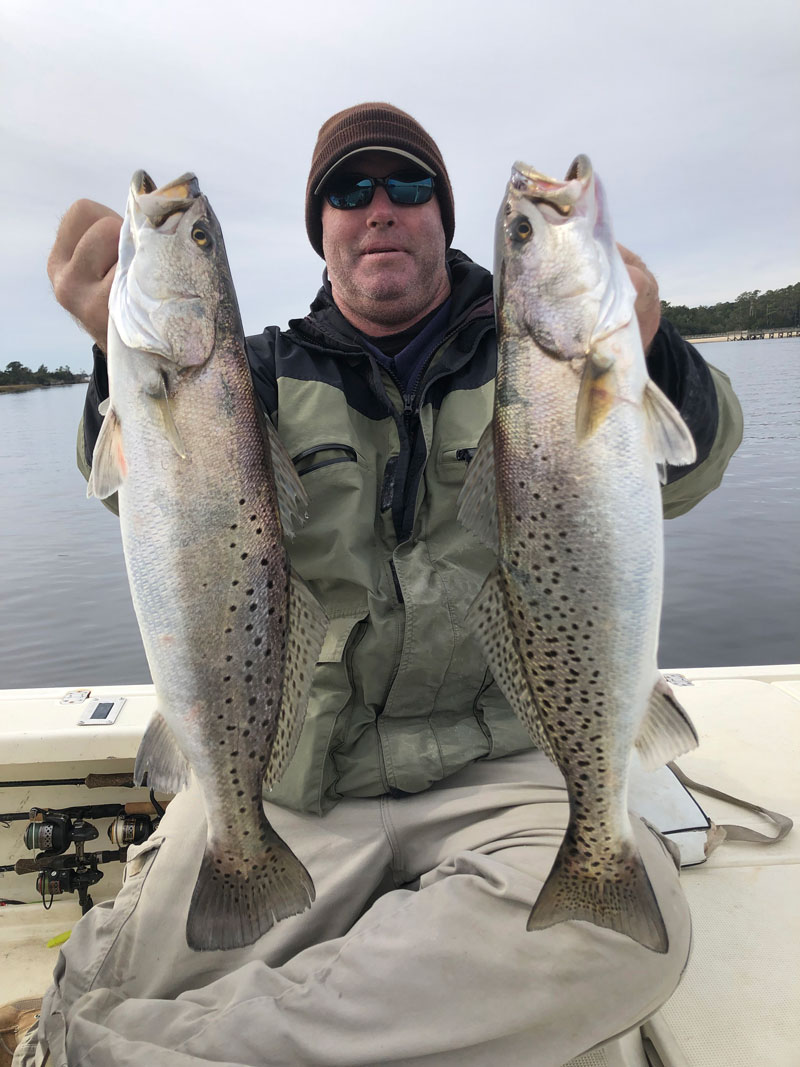
Specks are plentiful in this area in late fall
With the last calendar page just one turn away, fishermen targeting speckled trout are out to play without any holds barred. And the ICW running through Little River near the North Carolina-South Carolina border is one of the best places to chase fish in the late fall.
Specks slide into the Intracoastal Waterway in large schools, chomping on baitfish and preparing for the winter. Many anglers choose to beat the banks with soft plastics and float live shrimp. But others with years of experience choose a different game plan.
Tom Cushman of Captain Cush’s Calmwater Charters gets fired up this time of year and targets speckled trout on nearly every trip to the brackish waters of Little River.
“Speckled trout stack up this time of year in the ICW here,” said Cushman (843-997-5850). “But the fish will often migrate around to different places in the ICW.”
Slow-trolling jigs is the way to go
The ICW in Little River area is practically a large ditch with a deep channel in the center and shallow banks on either side. But it is littered with docks, small creeks, seawalls and other man-made features, with tons of oysters and grass lines in between. As a result, trout will sometimes shift to different areas from day to day, chasing bait or just finding places they prefer on a particular tide. As a result, a more-active method to find and catch fish may be better suited.
Slow-trolling jigs is Cushman’s foolproof way of finding and catching fall specks.
“I love trolling for trout in the fall. It’s a great way to find the fish, and you can catch plenty of fish too,” he said.
Cushman will fish from just above the turn bridge in Little River into North Carolina towards Sunset Beach. He will troll the edges, targeting a specific water depth range.
“We catch them in as little as 1 to 2 feet of water, and as deep as 6 to 7 feet. The sweet spot is 2 to 6 feet,” he said.
Stay shallow, move slow
This area is affected by a moderate tidal swing. Water depths can change as much as 5 to 6 feet. But 4 1/2 feet is the most-likely change on a tidal swing. Cushman will troll against the grass and structures on higher water and will move off the bank, near the dropoff, on lower tides. He will rarely troll much beyond the shelf in the deeper water.
“I troll against the current at one to two miles per hour and with ¼- to 1/8-ounce jigs (with soft-plastic trailers) approximately 70 to 80 feet behind the boat,” he said.
Depending on the water’s color and clarity — the ICW in this area is fed by the tannic Waccamaw River, which gives the water a tea to coffee-colored look, despite remaining fairly clear — Cushman will use a wide variety of colors to get the job done. His favorites will feature red and green/chartreuse. But trout will hit a wide variety of colors, some being bright and gaudy and some more natural.
“I like red and green. But I will use a lot of different colors when the fish aren’t hitting regularly on red and green,” he said.
Trolling can be an easy way to find fish this time of the year. Anglers may have to cover a lot of water. But the fish are aggressive and will let anglers know exactly where they are. And they will not have any problems pouncing on passing baits.



Be the first to comment